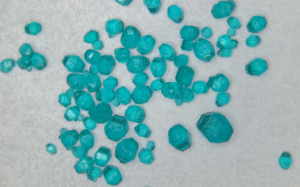Nickel Toxicity Linked to Sterol Biosynthesis in Cells

Researchers from the University of Georgia published an important study in the journal PLoS Genetics. They discovered a link between nickel exposure and sterol deficiency in mammalian and fungal cells. This connection was unexpected and has implications for understanding nickel toxicity and sterol biosynthesis.
Nickel and Its Role
Nickel is a heavy metal. It was once popular for jewelry but is now known as a common allergen. Nickel compounds can cause cancer. In nature, nickel is essential for certain enzymes, particularly urease, found in plants, bacteria, and fungi. For example, the fungus Cryptococcus neoformans uses urease to grow and spread.
About Sterols
Sterols are vital components of cell membranes in plants, animals, and fungi. In mammals, cholesterol is the main sterol. High cholesterol can lead to heart disease and stroke. Statins are often prescribed to lower cholesterol levels. In fungi, ergosterol serves a similar role. Drugs like fluconazole target ergosterol to combat fungal infections without harming human cells.
Research Findings
The researchers found that a normal strain of Cryptococcus neoformans could thrive in a medium with high nickel concentrations. They initially believed that urease, which requires nickel, was key to this tolerance. However, mutated strains lacking urease still survived in nickel-rich environments, indicating urease was not the factor.
Discovery of Sre1
The team then examined 284 other mutant strains of C. neoformans. They found that a specific mutant lacking the sterol response element 1 (Sre1) protein was highly sensitive to nickel. Sre1 regulates genes involved in sterol biosynthesis. This finding shifted the study’s focus from urease to Sre1 and its related genes.
Mechanism of SREBP
The gene for Sre1 is present in all animals, including humans, where it is known as SREBP. When cholesterol levels drop, SREBP is activated, leading to the production of enzymes necessary for sterol synthesis. The researchers discovered that nickel activates the cleavage of SREBP. Without SREBP, the Sre1 mutant could not tolerate nickel.
Role of ERG25
The study revealed that several sterol biosynthetic genes are activated by the SREBP fragment. The researchers hypothesised that certain genes needed to be turned on for nickel tolerance. They found that over-expressing the ERG25 gene restored nickel tolerance in the Sre1 mutant strain.
Impact on Human Cells
In experiments with human cells, exposure to nickel resulted in lower cholesterol levels, mirroring the effects observed in C. neoformans. This suggests that nickel impacts sterol levels in both fungi and mammals.
The research team is exploring several questions. They are investigating whether ERG25 genes in other fungi can provide nickel tolerance. They also want to determine if the sterol biosynthesis role of ERG25 is essential for its nickel tolerance function. Additionally, they are examining if the human equivalent of ERG25 influences nickel tolerance in human cells.
Potential for Novel Treatments
This research opens avenues for new treatments. The ERG25 protein is vital for sterol biosynthesis and now appears to confer nickel tolerance. Targeting the diversion of this protein between sterol biosynthesis and nickel tolerance could lead to innovative antifungal drugs.






